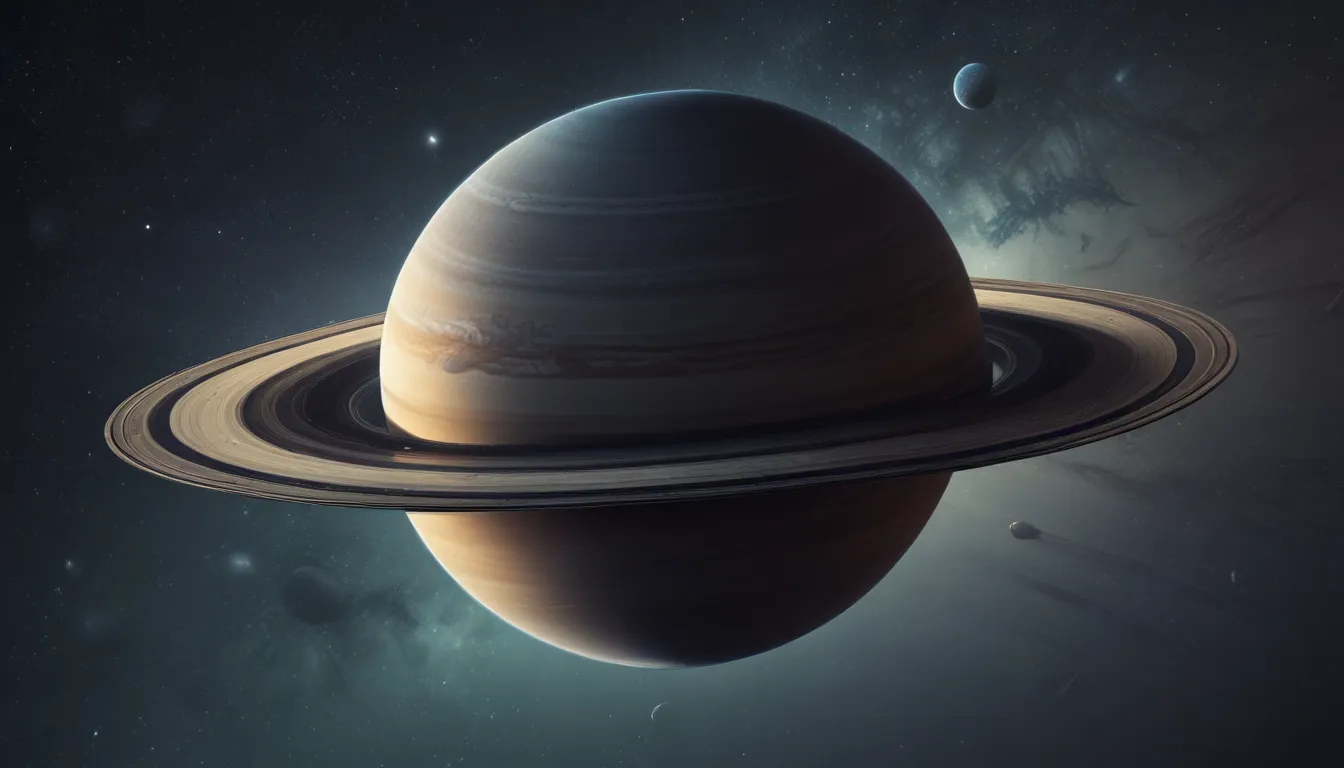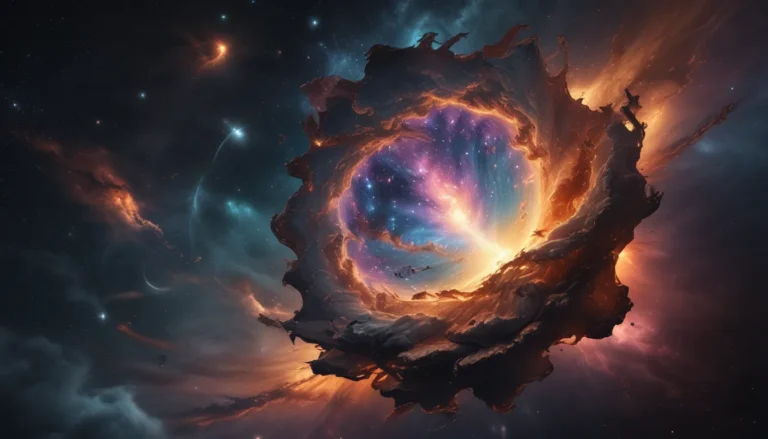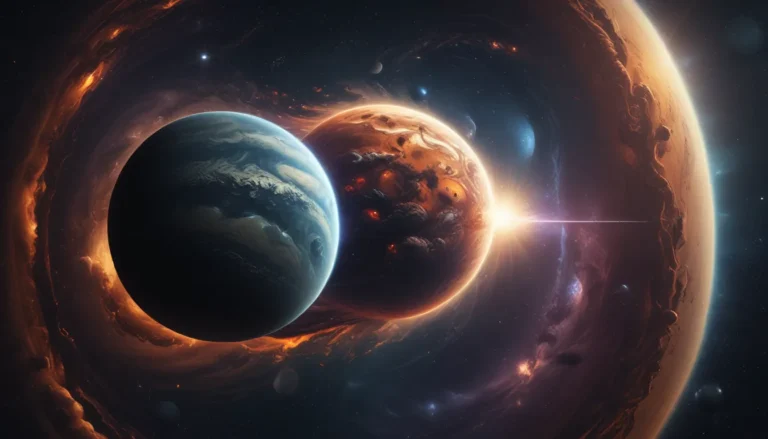The pictures we use in our articles might not show exactly what the words say. We choose these pictures to make you interested in reading more. The pictures work together with the words but don’t take their place. The words still tell you the important facts.
Saturn, with its mesmerizing ring system, has captured the imagination of astronomers and enthusiasts alike. Beyond its iconic rings, this gas giant holds a multitude of fascinating secrets waiting to be uncovered. Join us on a journey through the mysteries of Saturn with these enriching facts and discoveries.
Unveiling the Enigma of Saturn
Saturn, the sixth planet from the Sun, boasts impressive dimensions that set it apart from its planetary peers. Measuring 60,286 km across at its equator, Saturn showcases a unique oblate shape due to its rapid rotation. In contrast, its poles span a narrower distance of 54,364 km. The planet's rapid spin, clocking in at 9.87 km per second, complements its orbital velocity of 9.68 km per second around the Sun. Comprising predominantly of hydrogen, Saturn's atmosphere reveals a composition where this element reigns supreme at a staggering 98%.
Tracing Saturn Through History
Delving into the annals of astronomy, we discover the rich tapestry of Saturn's exploration by ancient civilizations and modern scientists. Babylonian astronomers laid the foundation for observing Saturn, marking the first recorded sightings in history. Following this trail, illustrious figures like Ptolemy, Galileo, and Huygens contributed significant insights into Saturn's orbit, rings, and moons. Galileo's pioneering telescope observations in 1610 unveiled a startling revelation of Saturn's rings, initially mistaken as moons, igniting a wave of astronomical curiosity. Subsequent discoveries by Cassini and Herschel illuminated Saturn's planetary composition with newfound moons and rings, expanding our cosmic understanding.
Saturn’s Enigmatic Properties
Saturn's distinctive characteristics and peculiarities offer a captivating glimpse into the complexities of this celestial giant. With a density lower than that of water, Saturn presents a paradox of being a gas giant yet remarkably light. Its composition mirrors Jupiter's inner metallic hydrogen mantle, generating a potent magnetic field that captivates astronomers. Emitting radio waves originating from reactions within its metallic hydrogen core, Saturn unveils a cosmic symphony of electromagnetic phenomena. The planet's scorching interior temperature, reaching a staggering 11,700 degrees Celsius, defies conventional notions of planetary heat sources, sparking debate among scientists.
Mysteries of Saturn’s Moons: Titan and Enceladus
Among Saturn's diverse moons, Titan emerges as a planet-like moon shrouded in an enigmatic atmosphere of nitrogen, methane, and ethane. Boasting sprawling hydrocarbon lakes on its surface, Titan hints at the possibility of extraterrestrial life with its complex atmospheric compounds. Delving deeper, the moon's plasma interactions with Saturn's magnetic field unveil a dynamic interplay of cosmic forces. Enceladus, with its icy surface and potential underground ocean, arouses speculation of microbial life thriving beneath its frozen facade. Scientists theorize that Enceladus' icy eruptions influence Saturn's radio waves, offering a tantalizing link between moon and planet.
Saturn’s Iconic Rings: A Cosmic Enigma
Saturn's majestic rings stand as a testament to the planet's celestial splendor, captivating observers with their ethereal beauty. Comprised mainly of water ice and organic compounds, the rings weave a mesmerizing tapestry that baffles scientists with their elusive origins. Theories abound regarding the rings' formation, ranging from shattered moons to primordial remnants from Saturn's birth. Dynamic interactions with Saturn's moons, such as Enceladus and Prometheus, contribute to the rings' stability and evolution, enriching our understanding of Saturn's cosmic ballet.
Exploring Saturn’s Realm: Missions and Future Endeavors
Humanity's quest to unravel Saturn's mysteries has led to groundbreaking missions like Pioneer 11, Voyager 1 and 2, and the landmark Cassini-Huygens mission. Cassini's monumental discoveries, encompassing Titan's lakes, Saturn's rings, and the enigmatic Enceladus, have reshaped our cosmic perspective. Future missions, such as NASA's Saturn Atmospheric Entry Probe and Dragonfly to Titan, promise to delve deeper into Saturn's mysteries, unveiling new frontiers in planetary exploration. Germany's EnEx mission to Enceladus underscores the collaborative efforts to unlock Saturn's secrets, paving the way for unprecedented discoveries in our cosmic backyard.
Embracing the Wonder of Saturn
As we journey through the realms of Saturn, we are humbled by the vastness of space and the enigmatic beauty of the ringed planet. Each discovery and revelation unveils a tapestry of cosmic wonders, inviting us to explore the mysteries of the universe with open hearts and inquisitive minds. Let Saturn's celestial dance inspire us to reach for the stars and embrace the infinite possibilities that await us in the cosmic expanse. Join us on this cosmic odyssey as we gaze upon Saturn's rings and moons, unraveling the secrets of the universe one discovery at a time.






